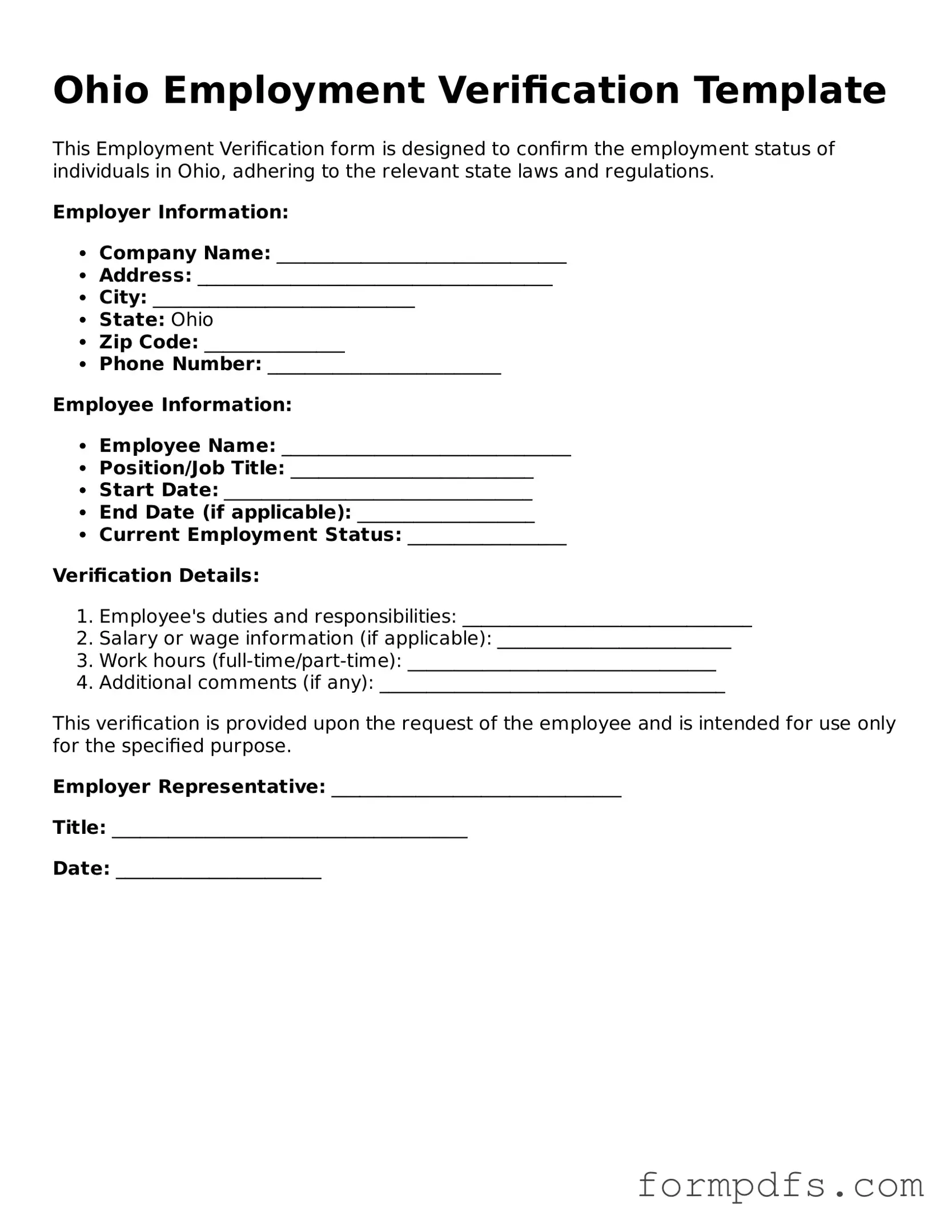The Ohio Employment Verification form is a document used to confirm an individual's employment status. It is often required for various purposes, such as applying for loans, housing, or government assistance. The form typically includes details about the employee's job title, duration of employment, and salary information.
Employers are usually responsible for completing the Ohio Employment Verification form. They provide the necessary information about their employees when requested. Employees may need to request this form for personal reasons, such as applying for benefits or verifying their employment history.
What information is required on the Ohio Employment Verification form?
The form typically requires information such as the employee's name, job title, dates of employment, and salary. Employers may also need to include their contact information and any additional details relevant to the verification process.
Is there a fee for obtaining the Ohio Employment Verification form?
Generally, there is no fee for obtaining the Ohio Employment Verification form. However, if you request this information through a third party or if your employer charges for processing, there may be associated costs. Always check with your employer for specifics.
How long does it take to process the Ohio Employment Verification form?
The processing time can vary. Typically, employers should complete the form within a few business days. However, delays may occur due to the employer's workload or if additional information is needed. It’s best to follow up with your employer if you experience delays.
Can I use the Ohio Employment Verification form for different purposes?
Yes, the Ohio Employment Verification form can be used for various purposes, including loan applications, rental agreements, and government assistance programs. Ensure that the form is completed accurately to meet the requirements of the specific situation.
What should I do if my employer refuses to complete the form?
If your employer refuses to complete the Ohio Employment Verification form, you should first ask for clarification on their policy. If necessary, you can also provide them with information about why you need the form. If the issue persists, consider seeking assistance from a human resources representative or legal advisor.
Can I request my employment verification from a previous employer?
Yes, you can request employment verification from a previous employer. Contact their human resources department and provide any necessary details, such as your employment dates and job title. Keep in mind that response times may vary.
Is the information on the Ohio Employment Verification form confidential?
Yes, the information on the Ohio Employment Verification form is typically considered confidential. Employers should handle this information with care and only share it with authorized parties. Employees should also be aware of who will receive the completed form.
